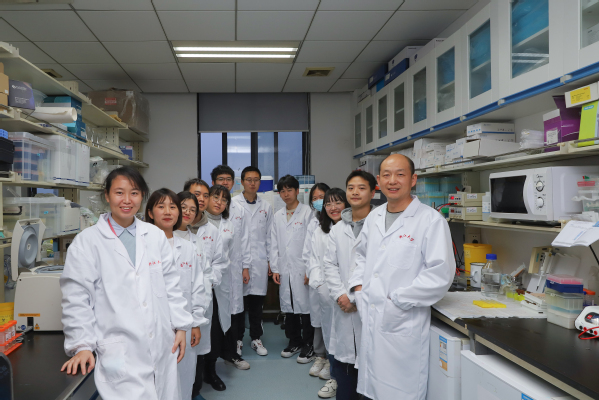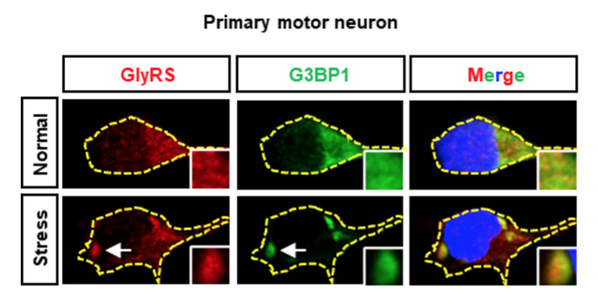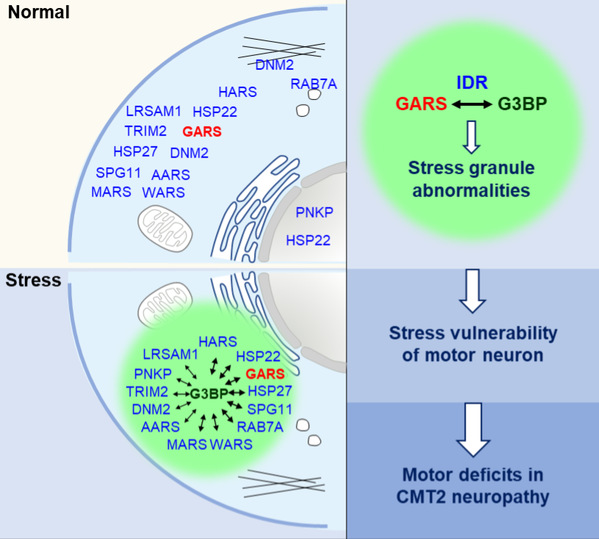Researchers Reveal the Secrete of Nonrandom DNA Seg-regation in Human Cells
Charcot-Marie-Tooth diseases (CMT) are a group of inherited peripheral neuropathies with a prevalence of ~1:2500. According to various causal genes, CMT can be classified into many different subtypes. Despite similar clinical presentation among different CMT2 subtypes, their causal mutant proteins are highly varied in their cellular localizations and functions. It remains unclear whether there is a molecular link across different CMT-causal mutant proteins.
On February 3, 2023, Prof. BAI Ge's research group from the School of Brain Science and Brain Medicine, Zhejiang University School of Medicine, and LI Jinsong's research group from the CAS Center for Excellence in Molecular Cell Science, Chinese Academy of Sciences published a cover article in Cell, entitled “Diverse CMT2 Neuropathies are Linked to Aberrant G3BP Interactions in Stress Granules”. This study reveals that the stress granules abnormality is the common pathogenic mechanism underlying different subtypes of CMT2 diseases. This finding establishes an important theoretical basis for the development of uniform treatment for multiple CMT subtypes, and provides a new conceptual framework for understanding the genetic heterogeneity in many other diseases.
In the past decades, there is an emerging consensus that most, if not all neurological diseases involve interplays between genetic predisposition and environmental stressors. The formation of stress granules (SGs) is an important anti-stress mechanism in response to environmental insults. SGs can help to avoid protein mistranslation and effectively organize various signaling molecules and energy resources in cells, thereby improving cell survival upon stress. When the environmental stress disappears, the SGs are disassembled, and the translational machinery and various signaling molecules quickly resume their functions, helping the cell activities back to normal.
In this study, researchers started with the glycyl-tRNA synthetase (GlyRS), the causal protein of CMT2D subtype. When motor neurons were exposed to adverse environmental stimuli, the mutant GlyRS proteins translocated from the cytoplasm to the newly formed stress granules, where they aberrantly interacted with the SG core protein, G3BP.
Using techniques including live cell imaging, proximity labeling, quantitative mass spectrometry, and STORM super-resolution imaging, the researchers found that the abnormal interaction between mutant GlyRS and G3BP had no effect on SG dynamics but significantly perturbed the G3BP-centric core SG network, resulting in over-sequestration of many non-SG components. This disrupted SG-mediated stress responses, leading to increased stress vulnerability in motor neurons. The researchers also found that the aberrant interaction between mutant GlyRS and G3BP proteins was mediated by intrinsically disordered region (IDR). Mutations in this region can eliminate the influence of mutant GlyRS upon SGs and alleviate motor deficits in CMT2D mouse model.
Furthermore, the researchers found that this mechanism could be extended to other CMT2 subtypes. By testing more than 20 different CMT2-causal mutant proteins, the researchers found that, upon stress, most of these proteins can enter SGs and aberrantly interact with G3BP. This led to SG abnormalities, and disturbed the stress response in motor neurons. These findings suggested that SG abnormalities may represent a common pathogenic mechanism underlying different subtypes of Charcot-Marie-Tooth diseases.
Source: The research team led by Prof. BAI Ge




